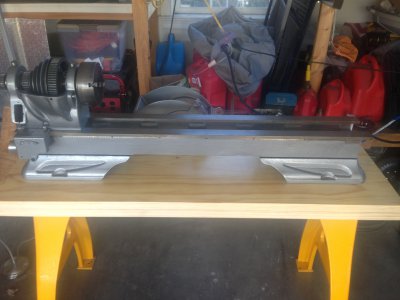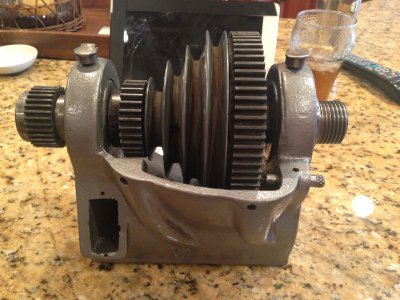Toader,
You should also acquire a copy of the Atlas Manual of Lathe Operations (AKA MOLO). They were printed on average ever 1 to 4 years from 1937 until 1988. To go with your 10F you should look for one dated 1957 or earlier and only with the Atlas logo on the front cover (not Craftsman). The reasons are that after 1957 they are mostly applicable to the 1/2" bed 12" and that Chapter 7 on Threading is different between the Atlas and Craftsman versions. Also, there were apparently 4 versions of the 1937 edition, none identifiable by the front cover (they all say Atlas). I have three versions and although I haven't compared the rest of each book page by page, Chapter 7 is different in each. Chapter 7 in what I'll call Version 4 covers the Sears Master Craftsman 12" (101.07403 and 101.07402). V3 covers the 10F. V2 has no pages in Chapter 7 (Atlas printed one and maybe two separate Threading Supplements - I have the 10F one and suspect that there must have been a Sears one). V1 is only an assumption but if it existed it covered the 10D and earlier (that used the 96T threading gears). And if the 10D version existed, there may have been an early Sears version, too. But I'm still looking for either or both. If you intend to look for a 10" QCGB, restrict your search to roughly 1948 to 1957 with an Atlas front cover.
On the QCGB question, the 10" and 12" are not interchangable. Most of the internal parts are the same but the main housing castings are different and the gear guards are different, plus some other parts. As Ryan wrote, if you don't do much threading, they aren't as useful as if you do. However, they are certainly more convenient if you want to take faster roughing cuts and then go to the finest feed for the finish cut(s).
On accessories, if you don't have a milling machine, the milling attachment is good to have, although it will only handle small parts generally. Get a steady rest and probably a follow rest. Get a carriage stop and probably a cross feed stop. Most of the rest are irreplacable if you need them and no use if you don't. For example, if you never rebuild DC motors, there is no point in having a mica undercutter. If you never make more than one of anything, there isn't much use in having collets and either of the collet attachments. I happen to have all but about two of the attachments built for the 12" but I've been slowly collecting them for the past nearly 35 years.
On the issue of HSS or carbide cutters, I've used almost nothing but carbide since I got my lathe. But it's possible I started off that way because all of the commercial machine shops that I did a lot of business with used them and I followed suit. However, you can get just as good results from either and it's certainly true that in a non-production environment, HSS is cheaper in dollar cost.
On the spinning drill chuck, all that I can suggest is to degrease the tailstock ram bore and chuck arbor. And always seat the arbor home with a "thunk". If the drill is large enough (or with 2MT drills), I also hit the tip with an oak block two or three times just to be sure.
Don't forget that you were going to send me the serial number.
Robert D.




